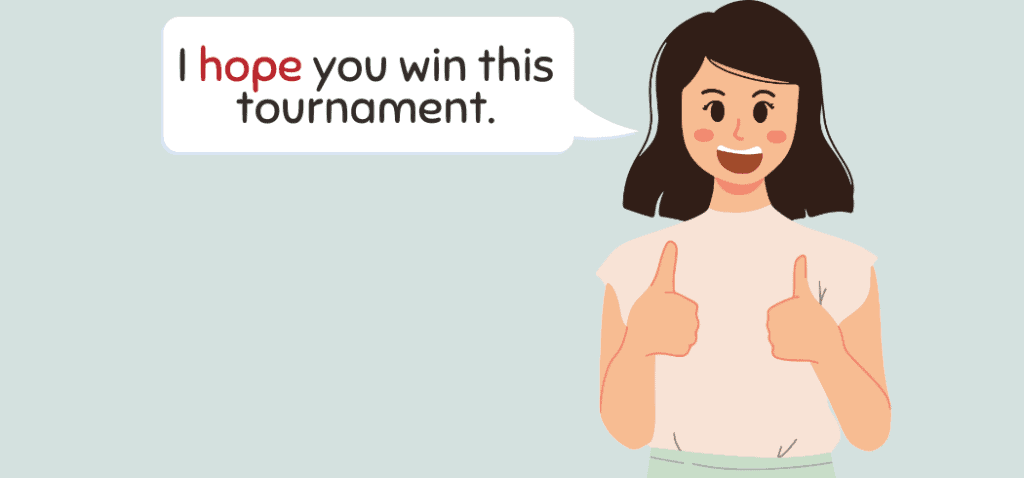I’m sure you’ve tried hoping for something. But have you expressed that hope accurately? Which verb tense do you use it with? I know, now I’ve confused you! Not to worry, I’ll break everything down for you.
My guide will help you discover how to use hope with other verbs in different tenses. I’ll teach you how you can express your hope for the present, past, and future.
Hope Meaning

As a verb, hope means to desire something good or positive in the future. It can be synonymous with wish. However, wish is used to desire something impossible, whereas hope indicates possibility. Here are some examples of sentences with hope.
- I hope you win this tournament.
- Eleanor hopes they meet again.
Hoping for the Present
We often use hope in the present tense with another verb, usually a stative verb, in the simple present tense. For example:
- I hope it’s okay with you.
In this sentence, hope is in the simple present tense. It’s paired with the be-verb is, which is also in simple present form.
Here are other examples.
- I hope that you’re having a great time.
- Ani hopes we’re not mad at her.
Hoping for the Future
If you are making future hopes, use the simple present hope with the simple future tense. You can also use it with the simple present tense, which is more common in the English language. For example:
- I hope we’ll see each other again.
- I hope we see each other again.
In the first sentence, the simple future form will see is used to indicate the act of seeing each other in the future. But the simple present form see is more common.
Below are more examples I made.
- I hope they will reconcile soon.
- My classmates hope the teacher cancels the test tomorrow.
- Tiffany hopes they will see the movie next week.
Hoping for the Past
Use hope in the past tense when the act of hoping was done before the present. But when you are currently hoping for something that happened in the past, use it with the past tense. Consider this example:
- I hope Mila got the scholarship.
This sentence implies that the scholarship results are out. But the speaker doesn’t know if Mila got it or not.
Another example is when you apply for a job but don’t know if you got hired or not. We still use hope in the present tense since it is something you hope for now. But because you’re thinking of the past, you say, “I hope I got hired for the position.”
You can even use the present perfect tense instead of the past tense if something affects the present.
Here are more hope examples I’d use with present perfect and past tense verbs.
- I hope you haven’t got lost.
- I hope Joannah got her dream car.
- I hope you found your wallet.
Hoping for the Future in the Past
Suppose someone hoped her friend would get a new job in the past. If they are saying this in the present, it’s essential to use would. That means we don’t know if her friend, in fact, got a new job. For example:
- I always hoped she would get a new job.
Here’s another example.
- I went to London, and I hoped that I would be able to find the perfect dress.
In Hopes of
In hopes of means with the aim of. For example:
- I went to the game in hopes of seeing Jeremy.
Learn the Basics of Hope
Now you know how to properly use hope in grammatically correct sentences. Follow these guidelines:
- Use hope with the future or present tense for future hopes.
- Use hope with the present or present continuous tense for present hopes.
- Use hope with the past or past perfect tense for past hopes.
I hope this guide helps you differentiate between the uses of hope. Remember that hope expresses desires that are possible.
